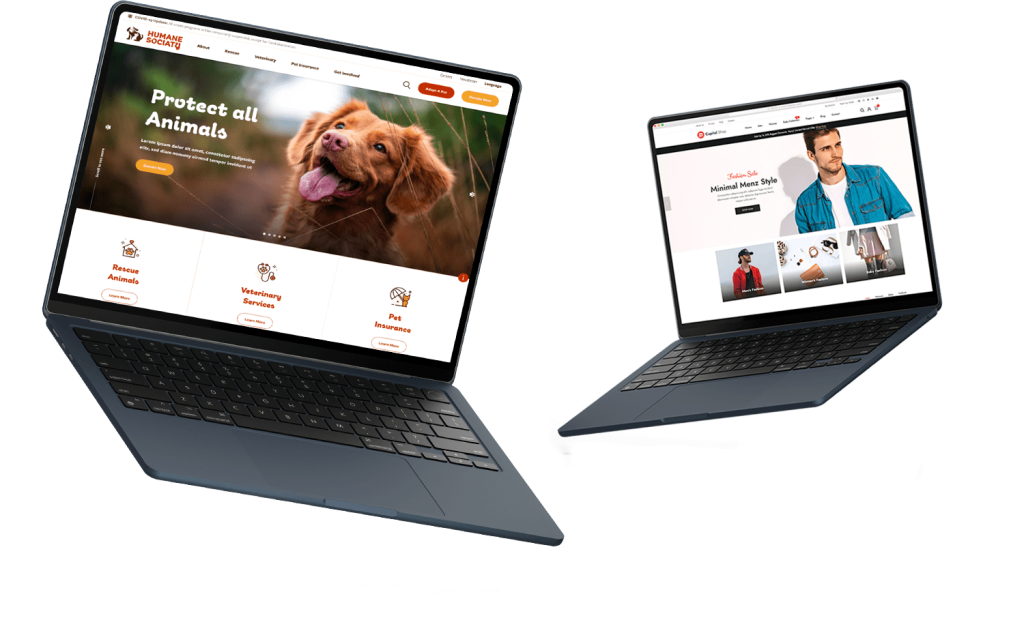You’ve invested time, energy, and capital into website redesign services, maybe even revamped your brand entirely. But now that your new site is live—what’s next? Was the investment worth it?
A website redesign is more than a visual facelift. It’s a strategic move aimed at boosting performance, enhancing user experience, and increasing conversions. However, to ensure you’ve actually moved the needle, you must measure success through clear, actionable KPIs.
In this blog, we’ll explore the most effective ways to evaluate your redesign and determine whether it delivered true ROI—or just pretty pixels.
1. Set Clear Goals Before You Launch
The first step to evaluating success is knowing what you’re measuring against. Every redesign should be aligned with specific business objectives.
Common Goals Include:
- Improving site speed and performance
- Increasing conversion rates
- Enhancing mobile usability with responsive website design
- Reducing bounce rate
- Increasing organic traffic
- Improving lead generation
If your redesign didn’t begin with goal-setting, start now by defining what “success” looks like for your brand.
2. User Experience Metrics: Are Visitors Enjoying the New Design?
User Experience (UX) is at the forefront of every effective redesign. Good design guides users toward actions—great design makes those actions frictionless.
Key UX KPIs:
- Bounce Rate: A lower bounce rate post-redesign indicates improved engagement.
- Average Session Duration: Longer sessions suggest users find the content and navigation valuable.
- Pages Per Session: Are users exploring more areas of your site?
- Task Completion Rate: How easily can users perform core functions like form submissions or purchases?
If these metrics improved, then your custom web development and UX decisions are paying off.
3. Conversion Rates: Is the New Design Driving Action?
The primary goal for most websites is to convert visitors—whether that means purchases, sign-ups, downloads, or form submissions. Comparing pre- and post-redesign conversion rates is critical.
Metrics to Watch:
- Lead Conversion Rate
- Sales Funnel Drop-Off
- Click-Through Rate (CTR) on CTAs
- Form Completion Rate
Tip: Use A/B testing tools like Google Optimize to experiment with CTA placements, layouts, and messaging post-redesign.
4. SEO Performance: Did Your Rankings Survive the Makeover?
A poorly executed redesign can sabotage search engine visibility. A well-executed one will maintain or even enhance it.
SEO Metrics to Evaluate:
- Organic Traffic: Has it increased or declined since the redesign?
- Keyword Rankings: Are your target keywords performing better?
- Backlink Retention: Ensure valuable links aren’t lost in the shuffle.
- Indexed Pages: Did you unintentionally block content from being crawled?
Working with a developer skilled in responsive website design ensures mobile-first optimization, which is now critical for Google rankings.
5. Mobile Responsiveness: Is It Truly Mobile-First?
With more than half of global traffic coming from mobile, your redesign must excel on smartphones and tablets.
Test With:
- Google’s Mobile-Friendly Test
- Real device testing (not just emulators)
- User testing sessions on different screen sizes
If mobile bounce rates have dropped and engagement has increased, your responsive website design is doing its job.
6. Website Speed: Faster = Better
Speed kills—especially slow websites. Site performance plays a major role in both UX and SEO.
Use Tools Like:
- Google PageSpeed Insights
- GTmetrix
- WebPageTest
Improve By:
- Compressing images
- Leveraging browser caching
- Minimizing CSS/JS
If your bounce rate is dropping and conversion rate is rising, performance upgrades from your website redesign services are likely a key factor.
7. Heatmaps and Session Recordings: Watch Real Users in Action
Numbers are valuable, but behavioral tools offer goldmines of insight.
Tools to Use:
- Hotjar
- Crazy Egg
- Microsoft Clarity
Watch how users navigate, where they get stuck, and where they click. These qualitative insights validate your redesign decisions—or highlight where tweaks are needed.
8. Accessibility Improvements: Inclusive Design = Better Results
Designing for accessibility not only expands your audience—it often leads to better UX for everyone.
Evaluate:
- Color contrast ratios
- Alt text for images
- Keyboard navigation
- ARIA roles
Accessibility improvements can indirectly impact bounce rate, engagement, and conversion rates—especially on forms and navigation menus.
9. Technical Health: Is Your Backend Built to Last?
A polished front end needs a robust back end. Quality custom web development ensures fast load times, fewer errors, and a smoother user journey.
Key Checks:
- Broken links and 404 errors
- Redirect chains
- XML sitemap and robots.txt configurations
- CMS health and plugin compatibility
If your site is throwing fewer errors and your time-to-first-byte (TTFB) is faster, the backend overhaul was a win.
10. ROI: The Ultimate Success Indicator
All your metrics feed into one final judgment: return on investment. Did the money you spent on redesign actually increase revenue or leads?
Formula:
ROI = (Net Profit from Redesign – Cost of Redesign) / Cost of Redesign x 100
Track long-term benefits like:
- Increased customer acquisition
- Higher average order values
- Improved customer retention
- Reduced support costs due to better UX
A high ROI means your website redesign services investment was absolutely worth it.
11. Stakeholder and Customer Feedback: Gut-Checks Matter Too
Don’t ignore qualitative feedback. What do customers, clients, and internal teams say about the new design?
Collect Feedback From:
- Post-launch surveys
- Client and team reviews
- Social media sentiment
- Chat transcripts and support tickets
Sometimes the clearest signals of success come from the people actually using your site.
Measure What Matters, Then Iterate
The only way to know if your redesign was “worth it” is by measuring real results. Evaluate success based on a mix of hard data and human feedback. Look beyond the aesthetics and dive deep into UX, SEO, performance, and ROI.
At SpeedDot360, our website redesign services, responsive website design, and custom web development ensure your digital investment pays dividends. We don’t just design websites—we build platforms that drive growth.





